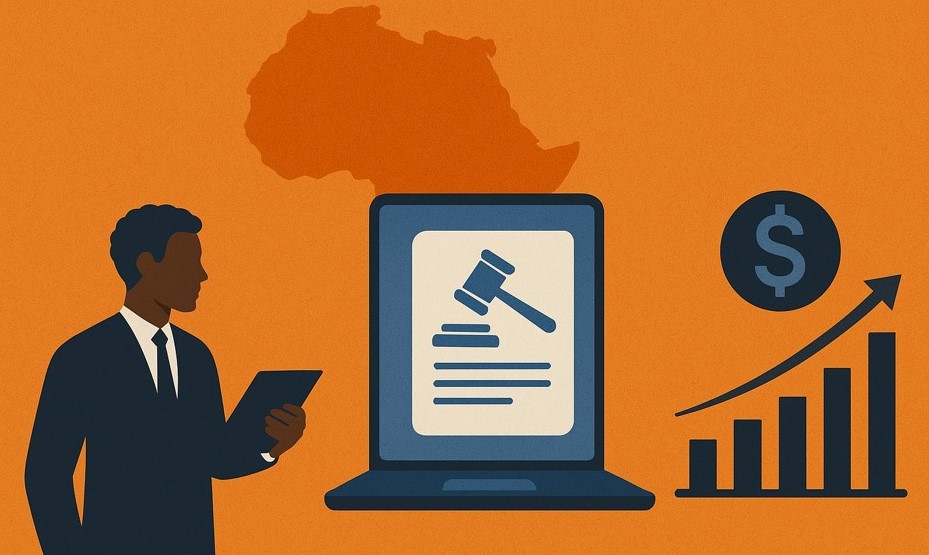The boom’s bloody hangover. Remember when Nigeria’s fintech idans, flush with VC millions, torched cash on zero-fee bonfires to lasso unbanked millions and seize digital payment rails?
Opay’s agents swarmed streets like digital conquistadors, Flutterwave’s APIs hummed with cross-border dreams. But the hangover hit hard. Investor spigots slammed amid global funding slowdown, naira freefalls, and 30% inflation gnawing at bones.
The new war chant is not “grow fastest”, it’s “profit or perish.” Titans like Opay, Moniepoint, Flutterwave, and Paystack scramble through unit economics hell, where revenue per user must devour sky-high acquisition and operations costs, plus compliance crucibles and revenue diversification.
This pivot isn’t mere evolution; it’s a savage maturity rite, where fragile dreams crack on profitability’s anvil. In a sector that ballooned from hype to heroics, only the resilient rise.
Flashback to the gold rush. Nigeria’s 200 million-plus population, tens of millions still bankless amid sluggish legacy banks, ignited the spark. Mobile penetration exploded past 150 million, turning phones into wallets. Foreign VC flooded like a monsoon.
Remember Paystack’s blockbuster 2020 acquisition by Stripe for $200 million-plus? Flutterwave rocketed to unicorn status with $250 million round.

Startups raised war chests totalling billions, subsidising rides and transfers to hoard users and dominate rails. The bet was audacious. The idea was to scale and crush competition, then profits follow. It mirrored India’s UPI explosion, where billions of free transactions built empires, and Kenya’s M-Pesa, which monetised scale into a telecom-finance behemoth.
But whispers from history warn that without underlying economics, these sandcastles wash away. Nigeria’s frenzy peaked in 2021 funding highs, but cracks formed as subsidies masked bleeding margins.
Profit pivot of Nigerian fintech
Payments unlocked the vault, but razor-thin margins, often under 1% per transaction, demand desperate diversification or death. Survivors stack revenue layers atop their user fortresses:
| Company | Users/Agents (latest) | Key Metrics (2023-2025) | Monetisation Mutiny |
|---|---|---|---|
| Opay | 50M users, 500K agents | 100M daily txns; $2.75B val (2024) | Zero fees → lending bloodbaths, wealth wars |
| PalmPay | 35M active users | Revenue $0.2M (2020) → $63.9M (2023); 15M daily txns | Txn tsunamis to B2B blitzes |
| Moniepoint | B2B beast | $110M raise (late 2024); >$1B val | Lending leviathans, embedded finance empires |
| Flutterwave | 10M+ merchants | $3B+ val; Africa/Europe rampage | Cross-border carnage, API assaults |
| Paystack | 60K+ businesses | Post-Stripe; banking integrations | SaaS sieges, compliance crusades |
The numbers roar defiance. Mobile Money Operators blasted ₦20.71 trillion (~$13.5B) in Q1 2025 alone, a blistering 1,500% surge from ₦1.28T in Q1 2021, per CBN data.
Total digital transactions hit ~₦800T in 2024, eclipsing traditional banks in sheer velocity and reach. Yet volume isn’t victory. Fintech entities unleash counterstrikes. Moniepoint’s microloan arsenals target SMEs; Opay piles on remittances and investment tools; PalmPay’s 31,000% revenue rocket fuels B2B assaults.
Average revenue per user (ARPU) claws upward, transforming transaction floods into profit torrents. It’s vengeance against the boom’s ghosts as scale now serves sustainability.
Market pressures and regulation in brief
Though macro demons are lurking. The naira plunged over 50% since 2023, supercharging FX costs for import-reliant ops; inflation’s 20-30% vice crushes margins; capital controls throttle inflows.
Funding flickered back to ~$2B in 2024 (Partech Africa) after the 2022 droughts, as licenced players doubled to 430+ by early 2025. But regulators circle like sharks. Overlapping fiefdoms, CBN, SEC, and NDIC, breed chaos, as Kuda’s Musty Mustapha laments, spooking investors and stifling sparks.
At 2025 FinTech Week, CBN Governor Olayemi Cardoso said: “Trust is non-negotiable“, unleashing sandboxes for safe innovation, consumer shields, and cashless mandates that turbocharged adoption.


Fines fell like guillotines in 2024, revoking licences from the reckless. Yet there are positives. PalmPay’s Chika Nwosu hails reforms as trust-builders post-naira redesign. Doomsayers abound still. Interswitch CEO Mitchell Elegbe argues, ‘Hand freebies to the poor, then charge? Unit economics doom most fintechs to dust.’
Ex-Diamond Bank head Uzoma Dozie skewers the 200+ pack: Are they solving real pains profitably? There are casualties like Cellulant’s Nigerian arm, which folded under subsidy weight. Globally, India’s Razorpay conquered via AI-driven compliance fortresses. Nigeria’s phoenixes could follow, wielding tech against turmoil.
Regulatory thunderbolts timeline:
– 2021: Naira redesign sparks digital wildfire.
– 2023: FX clamps choke remittances.
– 2024: Sandboxes ignite; $2B funding amid compliance carnage.
– 2025: Fintech Week mandates unity; Q1 volumes detonate.


The endgame: Flames or Phoenix?
The old days of chasing endless payments and free money deals are fading away fast. Now, it’s survival of the smartest, i.e. companies must think carefully and cut waste. They’re using smart tech like AI to tackle tough rules and regulations, while dropping products that don’t make money.
New services, like built-in loans and payments inside apps, will crown the real winners.
Two paths lie ahead in this fight:
- The winning road: Big, rule-following companies like Moniepoint will feast on business-to-business deals, especially if the naira gets stable. They’ll add loans and more services on top of their payment systems to keep growing strong.
- The road to ruin: Old companies still giving too many freebies will burn out as costs eat them alive. Mergers and shutdowns will wipe out the weak, leaving only tough survivors with scars from the battle.


Chasing profits isn’t killing Nigeria’s fintech dreams; it’s the fire that tests and builds true champions. These companies have already boosted financial access, taking banking from 40% of Nigerians to over 60%, connecting us all to the digital world.
But in this shaky economy full of ups and downs, fast growth was just a shiny lure; lasting strength is the real fire that burns away the fakes.








